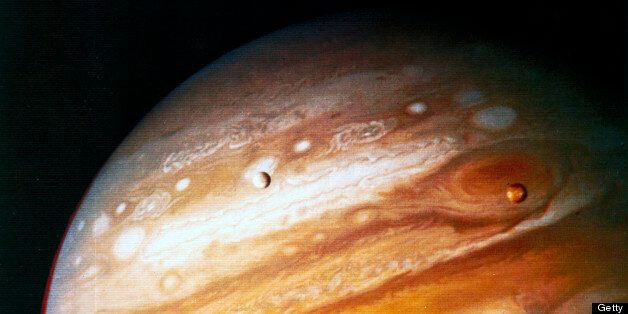
It's been just over two years since Nasa mothballed the Space Shuttle, but did you know that the Soviet Union built an almost identical shuttle known as Buran?
Development on Buran ('snowstorm' in Russian) started in 1974, primarily for defence purposes in response to the perceived military threat posed by the United States' shuttle programme.
With the US winning the race to put the first man on the moon, it's easy to forget that it was the Soviet Union that managed to get the first man into space (although Yuri Gagarin beat Alan Shephard by just a matter of weeks).
In 1963, the USSR's Valentina Tereshkova became the first woman in space - a milestone which, wasn't met by the US until 1983, courtesy of the late Sally Ride. However, with Buran, it was the Americans that led the way, with the Soviets following their lead.
The Buran, superficially at least, was practically identical to Nasa's shuttle, almost certainly as a result of Cold War espionage. Having said that, the US didn't make things particularly difficult for the KGB - all of the technology that went into the space shuttle programme was, inexplicably, unclassified and open to anyone.
The 'shared' data from the US meant that Buran was very similar to the American vehicle in terms of size and shape. However, with a strong heritage in space flight, the Soviets had also been working on a form of reusable space plane as far back as the 1960s, so they also had plenty of their own homegrown tech to deploy for Buran. The main difference was that Buran's main engines were housed in the standalone Energia launch vehicle, rather than on the shuttle itself.
The propellant used in both the boosters and the shuttles' manoeuvring systems was also different, and the thermal protection tiles were laid out differently on the two vehicles. The Buran was designed with an automatic landing system, which was only later fitted (and never used) on Nasa's shuttle as a precautionary measure. The Soviet shuttle was designed to take a maximum crew of ten, as opposed to the space shuttle's seven and crucially, the Soviet version was fitted with ejector seats.
The USSR built a total of eight test models and five production models and on 15 November 1988, the first flight-ready Buran shuttle was launched from the famous Baikonur Cosmodrome in Kazakhstan. Although the flight was unmanned, the shuttle spent three hours in space and made two orbits of the Earth before landing safely.
The timing of the Buran's 1988 maiden flight was unfortunate. With Mikhail Gorbachev's Glasnost and Perestroika reforms in full swing, the Soviet Union was crumbling, with the fall of the Berlin Wall only a year away. The state and its economy eventually collapsed in 1991, with the Buran programme being officially cancelled in 1993 by President Boris Yeltsin, a year before the first planned flight with a crew on board.
While the US may have won the shuttle race, with the programme ceased after 30 years of service, US astronauts have had to hitch lifts to the International Space Station (ISS) aboard Russian Soyuz spacecraft - at around $63million a seat.
While both the Buran, and the more successful Space Shuttle both led to technical advances for their respective space agencies, many of which are now in commercial use, the orbiters themselves now live out their days as museum exhibits.
Nasa's four remaining shuttles (including test vehicle Enterprise) are spread out at various museums across the US. Sadly, the only Buran that actually made it to space - OK-1K1 - was destroyed in a hangar collapse in 2002.
Test vehicle OK-GL1 is displayed at the Technik Museum Speyer in Germany, while another test unit is displayed in Moscow's Gorky Park, serving as a tourist attraction and a relic of the Soviet era.
Having made it my mission to see all of Nasa's decommissioned space shuttles - I've already ticked off Enterprise, Discovery and Columbia (the last of which I saw on the launch pad ten years before its tragic demise) - Buran has now been added to the list. Next stop, Gorky Park.
For some great images, head over to russianspaceweb.com and buran.su